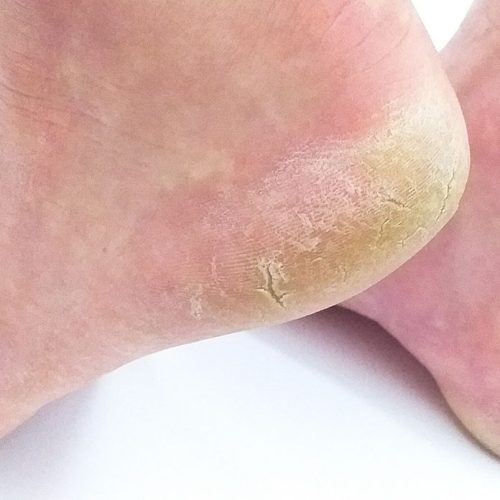Cracked Heels and Fissures
Cracked Heels/Fissures:
Causes, Treatment, and Prevention
Cracked heels, also known as heel fissures, are a common foot problem characterised by dry, thickened skin that splits, leading to discomfort and, in severe cases, pain and infection. While cracked heels can affect anyone, they are more common in people who have dry skin, stand for long periods, or wear open-back footwear. Fortunately, there are effective ways to treat and prevent cracked heels, ensuring soft, smooth feet.
Causes of Cracked Heels
Cracked heels develop when the skin on the heel becomes dry and lacks moisture, making it less elastic and more prone to splitting under pressure. Some common causes include:
- Lack of Moisture: Dry skin is the leading cause of cracked heels. Environmental factors such as cold weather, low humidity, and excessive bathing can strip the skin of natural oils.
- Prolonged Standing: People who stand for long periods, especially on hard surfaces, exert pressure on their heels, increasing the risk of cracks.
- Obesity: Excess weight puts additional pressure on the fat pad of the heel, leading to skin expansion and cracking.
- Improper Footwear: Open-back sandals and shoes fail to support the heels, allowing the skin to expand and crack.
- Medical Conditions: Conditions such as diabetes, hypothyroidism, eczema, and psoriasis can contribute to dry, cracked skin.
- Poor Hygiene: Not moisturizing the feet or exfoliating dead skin can contribute to heel fissures.
Treatment for Cracked Heels
The severity of cracked heels varies, and so does the treatment approach. Mild cases can be managed with home remedies, while severe cases may require medical attention.
Home Remedies for Mild Cases
- Moisturising: Applying a thick moisturizer or foot cream containing urea, glycerin, or shea butter twice daily helps restore hydration (see separate information sheet on creams).
- Exfoliation: Using a pumice stone or foot file after soaking the feet in warm water can remove dead skin, preventing further cracking.
- Foot Soaks: Soaking feet in warm water with Epsom salt for 10–15 minutes softens the skin and makes exfoliation more effective.
- Over-the-Counter Creams: Hydrating creams with salicylic acid or lactic acid help break down thickened skin.
- Wearing Socks Overnight: Applying a thick layer of moisturizer and wearing cotton socks overnight locks in moisture.
Medical Treatments for Severe Cases
- Prescription Creams: If over-the-counter creams are ineffective, a doctor may prescribe stronger creams containing urea or salicylic acid.
- Debridement: A foot health practitioner may trim thickened skin to prevent deeper cracks.
- Antibiotics: If an infection develops, antibiotics may be required.
Prevention of Cracked Heels
Prevention is key to maintaining healthy feet and avoiding the discomfort of cracked heels. Some effective measures include:
- Daily Moisturising: Using a good foot cream daily keeps the skin hydrated.
- Proper Footwear: Wearing supportive shoes with closed heels reduces stress on the skin.
- Regular Exfoliation: Gently scrubbing feet once or twice a week prevents the build-up of dead skin.
- Drinking Water: Staying hydrated improves skin elasticity and prevents dryness.
- Avoiding Hot Showers: Using lukewarm water and mild soap helps retain moisture.
By following these simple steps, you can prevent and treat cracked heels, ensuring smooth and pain-free feet all year round.

